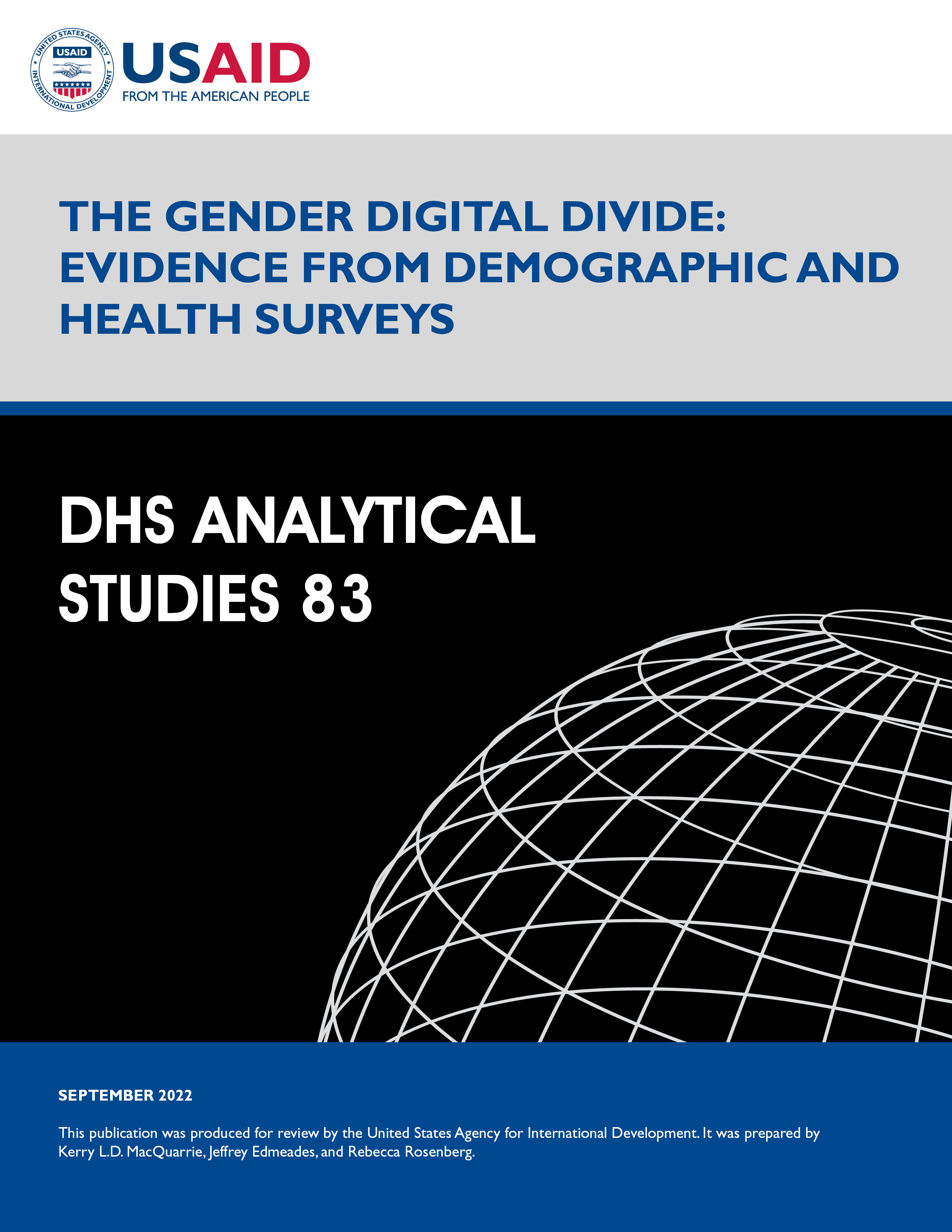There is no printed copy available to order.
Abstract:
Women may have less access to digital
resources and use them less often than men;
further, certain groups of women may be
particularly disadvantaged in their use of
digital technologies. The contours of the
gender digital divide may have implications
for mobile health interventions that rely on
mobile phones or the internet to reach their
intended audiences.
This study describes the gender digital
divide in multiple Demographic and Health
Surveys (DHS) across several information and
communication technology (ICT) indicators:
weekly internet use, mobile phone ownership,
and use of mobile phones for financial
transactions among women and men. We also
examine equity in digital access across
different subgroups, including residence,
age, and wealth, for women and men
separately.
We find that men’s and women’s weekly
internet use lags behind both their ownership
of mobile phones and weekly use of
traditional media (for example, radio or
television). We further find clear gender
gaps—favoring men—in mobile phone ownership,
their use for financial transactions, and
weekly internet use, with the biggest gap
seen in mobile phone ownership. Across all
countries, a greater percentage of women than
men lack access to both mobile phones and
internet, whereas a greater proportion of men
have both technologies.
We also find residence, age, and wealth gaps
related to these technologies. All three ICT
measures are higher among urban residents and
wealthier groups. Young people age 15–19—
women and men—are most disadvantaged with
regard to mobile phone ownership, but those
age 40–49 are most disadvantaged in regard to
internet use.
These patterns by residence, age, and wealth
are largely the same for women and men.
However, the residence and wealth gaps in
mobile phone ownership tend to be wider for
women than for men while age gaps in mobile
phone ownership and all other gaps for
internet use are wider for men.
Our results suggest that implementers of
mobile health interventions should account
for existing inequalities related to access
and use of digital technologies, innovate
ways to reach their intended target
population, and guard against unintentionally
worsening existing health inequalities.
 The Gender Digital Divide: Evidence from Demographic and Health Surveys (PDF, 964K)
The Gender Digital Divide: Evidence from Demographic and Health Surveys (PDF, 964K)
 The Gender Digital Divide: Evidence from Demographic and Health Surveys (AS83)- Analysis Brief
The Gender Digital Divide: Evidence from Demographic and Health Surveys (AS83)- Analysis Brief
